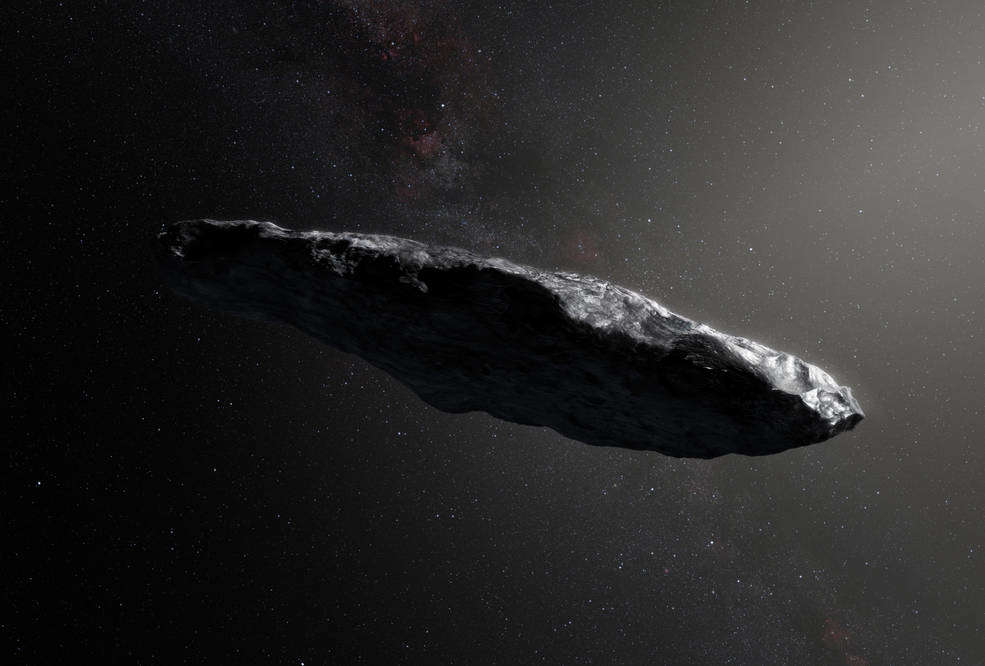Create a free profile to get unlimited access to exclusive videos, sweepstakes, and more!
Solar-sailing CubeSat concept could give better look at weird objects like ‘Oumuamua

Whatever ‘Oumuamua is (which is probably not an alien spaceship), there has been more speculation than study. That could soon change.
‘Oumuamua whizzed by too fast for us to launch anything up there to study it. While that one might remain a mystery, a team of scientists have now come up with a concept for a satellite that can wait for interstellar objects to pass by, and then catch up long enough to make observations to beam back to Earth before these objects disappear into the void. The tech combines solar sails with CubeSats for a spacecraft that would float into an orbit around the Sun, lurking in space and waiting for the next obscure thing to materialize.
Something like this could even grab samples from the next ‘Oumuamua if it hangs out in its orbit for an extended period of time and moves fast enough. NASA JPL astrophysicist Slava Turyshev, UCLA aerospace engineer Artur Davoyan, and their team of researchers recently published a new study detailing the concept of such an interceptor, a concept funded by NASA’s Innovative Advanced Concepts (NIAC) program.
“We realized that the only propulsion technology that can take us to an ideal region for detecting interstellar objects is solar sailing,” Turyshev tells SYFY WIRE. “Nuclear fission and fusion technologies are not mature enough yet, but with currently available sail materials and spacecraft, we could travel fast and far enough to reach the orbit we want.”
Turyshev believes our best shot at identifying any new intertstellar objects is sending an interceptor spacecraft, similar to the one he is developing for a technology demonstration mission (TDM) to the solar gravitational lens (SGL). Gravitational lensing is a phenomenon that occurs when an object moving through space bends light (from the star behind it in this scenario) as that light is making its way towards an observer. In the process, the bent light makes the object appear larger, which means it will be easier to detect. The furthest from the Sun a spacecraft can be to get the advantages of this is 550 astronomical units (AU). Each AU is about 93 million miles, so if we want to get a spacecraft out there as soon as possible, it has to be fast.
“The solar sailing technology we are developing enables space travel that is much faster than what is possible at present,” Davoyan tells SYFY WIRE. “With this capability we are able to explore interstellar objects and beyond. ‘Oumuamua is a very exciting starting point.”
Showing NASA that this is a viable idea means flying a TDM that is capable of traveling up to 5 or 6 AU a year. For comparison, Voyager I was able to accelerate to 3.5 AU in the same stretch of time. Future TDMs will increase the speed and complexity until the spacecraft can reach 20 to 25 AU in a year. No matter how fancy the trajectory design is, chemical propellant can only push a spacecraft up to 15 AU a year, and is a physical and financial drag for any payload.
Together with the lightness and speed of a solar sailing model, compact CubeSats minimize weight, taking a load off the mission. The Mars Cube One (MarCO) CubeSats are proof of this. At about only 30 pounds each and hardly bigger than your laptop, MarCO-A and MarCO-B rode along with InSight and could transmit data from the lander as it touched down on the Red Planet. Swarm spacecraft are just short of a pound each. What is crucial with a solar sail mission is the ratio of sail area to spacecraft mass — a higher ratio levels up the velocity.
The researchers want to see if they can break more boundaries at 35 AU per year, especially with the advanced new materials Davoyan is creating for the sail, which will maximize speed and protect the sensitive instruments from the effects of solar radiation. Turyshev believes spacecraft like this could eventually go off and explore the outer solar system or search for asteroids and exoplanets from an orbit relatively close to the Sun.
“With a new generation of small and capable spacecraft, [what] we are getting is the very attractive system that allows us to significantly increase speed and a design,” he says. “This enables a revolution in solar system exploration and is exactly what we have set out to do.”


























